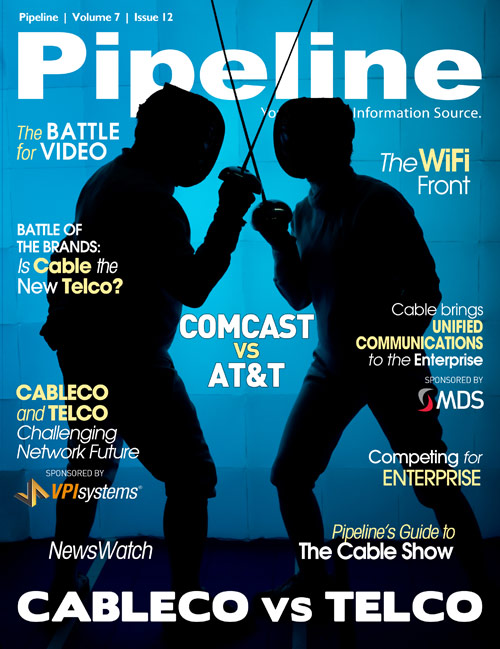Report author Nitin Bhas underlined the importance of these findings: "As a high percentage of mobile data consumption occurs while indoors or in motion, operators have an opportunity to offload data traffic onto complementary fixed networks via WiFi and Femtocells. Offloading also has the potential for creating new services and applications and enhancing the usage of existing services."
Based on this research, and several other reports, the general consensus is that mobile data offloading will grow to become a very large segment of the telecommunications industry, and video data is a prime driver for this evolution.
Cord cutting
While the same cannot be said for voice, despite all of the changes in how video is delivered and consumed, far fewer consumers are "cutting the cord" (replacing traditional cable video service with over-the-top alternatives) than originally predicted, and the rate of adoption is trending much lower than expected. This is due in large part to the fact that major events in sports, entertainment, and politics are still only broadcast live through traditional television. Additionally, it seems users are accustomed to the passive nature of television, as opposed to the active interaction that is required by most OTT options.


This leaves ample time for cable companies to re-tool and compete on personalization and customization, as well as depth of programming, of which they are aware (to wit: weekly news reports of cable companies striking deals with television and movie studios and sports teams).
But OTT players are also aware that live programming and original media are key differentiators, and have begun to strike deals for exclusive original content. Netflix announced an exclusive 26-episode contract with a television show starring Kevin Spacey and produced by David Fincher. Google took similar action via its video darling YouTube, announcing a YouTube-only feature-length film starring Rosario Dawson, Danny DeVito, and Josh Hartnett. And Facebook is dipping its toe into first-run video rental and partnered with Major League Baseball to stream pre-season games at no cost, and allow users to purchase a $120 subscription for regular season game access.
So who is winning?
Set-top OTT boxes have not gained traction, and are a failure for companies like Google, who trumpeted Google TV as the paid TV slayer, but the exponential rate of growth in online and wireless video means the story is just beginning. Netflix has certainly capitalized on evolving consumer habits the best, but no cable-free solution has yet matched the passive pull and original content pipeline that paid TV offers. In wireless, the mobile data offload play is huge for OSS vendors, and will only continue to grow. In the meantime, as content deals are hammered out daily between everyone from the cable company to Facebook, enterprising vendors and carriers can rely on greater personalization, customization, and real-time solutions to gain market share and better profit from their businesses.
Final thoughts
Few people could have imagined that something like a feature-length movie would one day be available at any time, anywhere on their computer or mobile phone…or Zune, iPod, or tablet. Even better, who could imagine that access to an entire video rental stores back catalog would be available in realtime for $10 a month, or a cable bill would no longer be the only ticket to paid programming. Really, it's consumers who are winning today, and fierce competition in the video market continues to enable better services. Time will tell if Netflix will go the way of Blockbuster. Perhaps in ten years major content developers will be folded into the delivery and service companies. At each turn in the journey, though, the infrastructure plays are significant in enabling the future of video.




